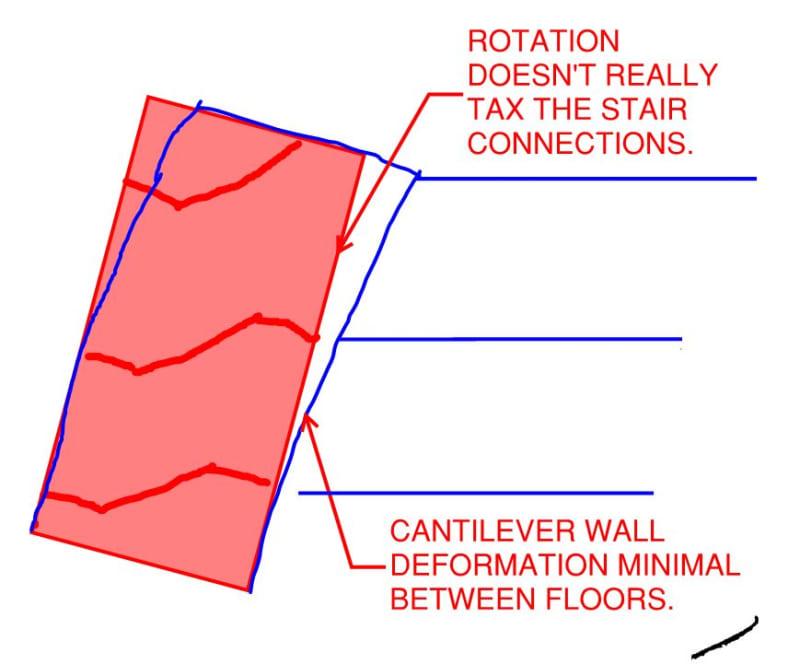My question is related to ASCE 7 CH. 13 - Seismic Design of Non-Structural Components.
Suppose we have a component such as a stair that spans between two floors. In a seismic event we will have the basic component forces in the x & y direction due to the weight of the component being accelerated per section 13.3. That is straight forward. Where my question arises is the force due to displacement induced by differential movement between floors. If the upper floor moves say 2", for argument sake, relative to the lower floor, that movement will induce internal forces on the stair and reactions at its ends (This all assumes pin-pin end supports, no slots).
The main questions would be as follows:
1. Is there any literature on this type of displacement induced force?
2. When designing for EQ would you treat these forces (acceleration vs. displacement) separately or combine them (X force + X displacement) in the load combinations. And if so or not, is there any code references or papers that would back that up or dispute that approach?
3. Are there reasons to not consider the displacements?
Thanks All!
Suppose we have a component such as a stair that spans between two floors. In a seismic event we will have the basic component forces in the x & y direction due to the weight of the component being accelerated per section 13.3. That is straight forward. Where my question arises is the force due to displacement induced by differential movement between floors. If the upper floor moves say 2", for argument sake, relative to the lower floor, that movement will induce internal forces on the stair and reactions at its ends (This all assumes pin-pin end supports, no slots).
The main questions would be as follows:
1. Is there any literature on this type of displacement induced force?
2. When designing for EQ would you treat these forces (acceleration vs. displacement) separately or combine them (X force + X displacement) in the load combinations. And if so or not, is there any code references or papers that would back that up or dispute that approach?
3. Are there reasons to not consider the displacements?
Thanks All!

